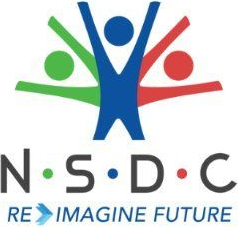Mind the Gap: Sustainable Development Goals under Threat

The UN Secretary-General António Guterres warns that SDGs may become “an epitaph for a world that might have been”. With renewed commitment and strategic investments, we can still turn the tide and ensure the SDGs become a legacy of collective achievement, not just another missed opportunity.
The 2030 Sustainable Development Goals (SDGs) represent humanity’s most ambitious roadmap to end poverty, hunger, and inequality. Yet, as we approach the deadline, the world stands on the brink of failure, according to several experts. UN Secretary-General António Guterres’s stark warning that the SDGs may become “an epitaph for a world that might have been” reflects a dire reality: despite widespread commitment, action has lagged behind ambition.
The 78 countries eligible for support through the International Development Association (IDA), the World Bank’s arm for low-income nations, represent the epicentre of the SDG crisis. These countries are home to over 70% of people living in extreme poverty, surviving on less than $2.15 per day, and more than 90% of those suffering from hunger. Children remain disproportionately affected; 257 million children in IDA countries are chronically undernourished, with devastating consequences for their growth and potential.
Since 2020, the compounding effects of the COVID-19 pandemic, global inflation, and rising debt have reversed years of progress. From 2020 to 2023, over 165 million people fell back into poverty, many in IDA countries, where debt repayments now outweigh investments in health and education.
The IDA’s role is pivotal. In the last fiscal year, it provided $31 billion in zero-interest loans and grants, mainly to African nations. These funds are directed toward areas with demonstrated impact: health, education, and climate resilience. For every dollar contributed, the IDA generates $3.50 in development funding by leveraging the World Bank’s AAA credit rating to issue low-cost bonds. Yet, this funding source is now under severe pressure.
On December 7, 2024, governments will pledge contributions for the next IDA replenishment cycle. While the IDA requested over $120 billion, current commitments suggest a figure below $105 billion – smaller in real (inflation-adjusted) terms than previous cycles. Major economies like France and the United Kingdom have reduced their contributions, despite hosting summits that proclaim a new era of global cooperation.
This funding shortfall could not come at a worse time. According to the United Nations, achieving universal access to basic health care, education, and sanitation in IDA countries by 2030 would require an additional $300 billion annually. Yet, donor funding for Africa, the region with the most pressing needs, declined by 2% in real terms last year, while debt-servicing costs soared to 20% of government revenue in many countries.
Without significant international support, progress on poverty reduction and hunger elimination will remain stalled. Recent estimates suggest that at the current pace, more than 500 million people will still live in extreme poverty by 2030.
Donor nations must act decisively to bridge the gap between their rhetoric and reality. The IDA’s ability to consolidate aid into national budgets has proven more effective than fragmented donor-led projects, which often lead to duplication and inefficiency. For example, Ethiopia managed 454 separate agricultural aid transactions in a single year, draining capacity and resources that could have been directed toward implementation.
Beyond replenishing IDA funds, governments must align their domestic policies with SDG priorities. Wealthier nations spend billions annually on subsidies for fossil fuels and agriculture, which often undermine global development goals. Redirecting even a fraction of these subsidies toward sustainable development financing could transform outcomes in the world’s poorest countries.
But reinvigorating the SDG agenda requires both political will and bold reforms. While the IDA remains the most effective multilateral funding mechanism, its impact is limited by the scale of global ambition. Wealthy countries must contribute more to ensure the IDA’s ability to meet growing needs, while developing nations must focus on governance and accountability to maximise the impact of available resources.
The stakes could not be higher. The SDGs were never simply about achieving numerical targets; they represented a vision for a fairer, more sustainable world. Allowing them to fail would be a moral failure with lasting consequences for global stability.
Time is running out, but the battle is far from lost. With renewed commitment and strategic investments, we can still turn the tide and ensure the SDGs become a legacy of collective achievement, not just another missed opportunity.
Reference:Read Kevin Watkins’ commentary for Project Syndicate here.


